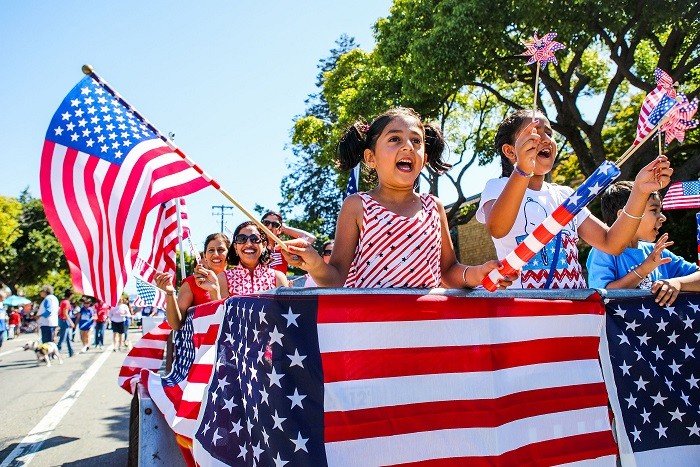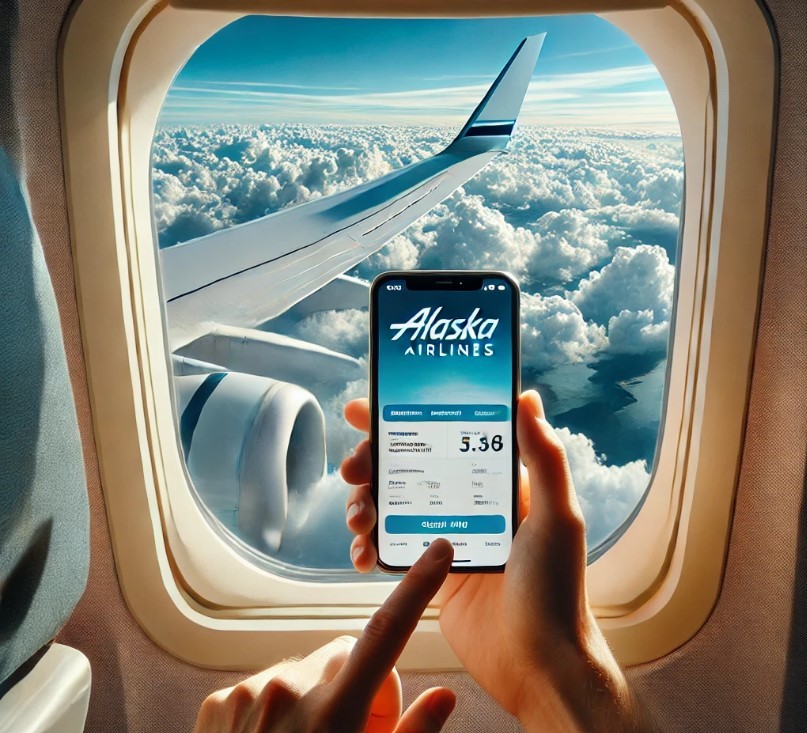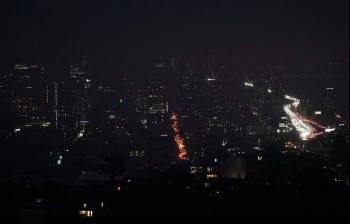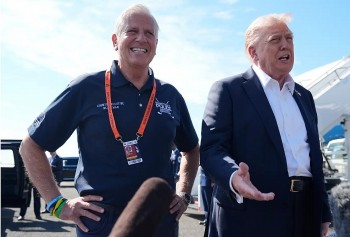Top 10 Unknown Nations You Might Never Visit
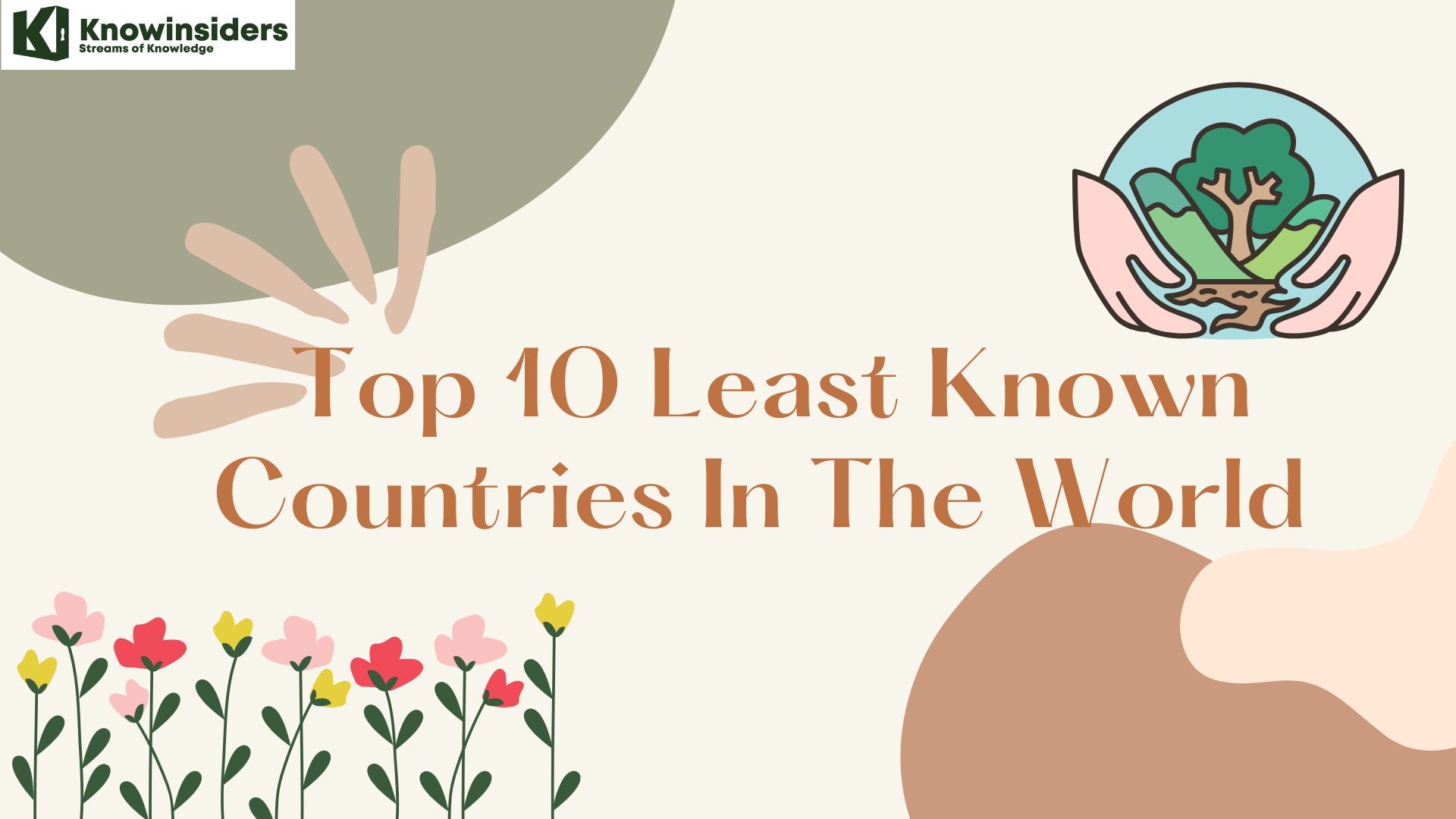 |
| Top 10 Least Known Countries In The World - Knowinsiders.com |
| Table of Content - Least Known Countries |
Dreams of visiting America, Europe, and Africa are common. Many people cherish the chance to travel to new locations and experience different cultures. All these locations have in common, though, is that a lot of people visit them every year. What about other nations where there aren't many tourists? Maybe this will be the first time you hear the name?
If you venture off the well-traveled paths, however, you'll find a whole new travel narrative. There are tourist destinations all over the world that are ready to receive visitors; when tourism is done well, it can even aid in reducing poverty.
The places that receive the greatest and least amount of visits differ significantly. In 2017, nearly 87 million foreign visitors came to France. Only 2,000 foreign visitors came to Tuvalu in the same year. Tuvalu is a country in the South Pacific where you can easily find an entire island or beach to yourself.
Here are The World’s Least Visited and Least Known Countries.
25 Interesting Facts About the World’s Least - Known Countries?
1. Nauru has the most overweight population in the world with over 95% of its population overweight.
2. The Marshall Islands in the Pacific Ocean are the most endangered island nation and have the highest risk of flooding due to climate change.
3. The villagers of Yaohnanen on Tanna Island in Vanuatu worship Prince Phillip, husband of the British Queen. The Prince Philip Movement believes the Duke is descended from one of their spirit ancestors and will visit them in 2016 and, if they're lucky, take up residence among them.
4.Tematangi Atoll is the antipode of Mecca in French Polynesia. This means that Muslims who want to pray on the island can kneel and pray in any direction because they will always be facing Mecca.
5. Guam lacks natural sand resources, so a significant amount of the island's roads are composed of a mixture of coral and oil. The oil on the roads tends to float to the top during rainy weather, which makes them hazardous. As a result, the majority of the island has a 35 mph speed limit.
6. With 851 distinct languages, Papua New Guinea is the world's most linguistically diverse country. 839 of these are still alive, while 12 are extinct. Although English is the official language, only about 2% of the population speaks it.
7. San Marino is the oldest state in world with a history dating back to 301AD. It is also the only state with more cars than humans with 1,263 road motor vehicles per 1,000 inhabitants.
8. Niger has the world's youngest population. Over half of Niger's population (50.09%) was under the age of 14 in 2013. Germany and Japan, on the other hand, have only 13% of their population under the age of 14.
9. Kiribati is the only country in the world that straddles the equator and extends into both the eastern and western hemispheres. Kiribati was also the first country to experience the arrival of the third millennium on January 1, 2000.
10. Comoros is the only country that is a member of the African Union, the Francophonie, the Organization of Islamic Cooperation, the Arab League (where it is the southernmost and only member entirely within the Southern Hemisphere), and the Indian Ocean Commission. Perhaps it is unsure of its national identity?
11. Apart from India, Fiji is the only country where Hindi is an official language. Native Fijians account for 54% of the population. Indian laborers were brought to Fiji during British rule to work on sugarcane crops. The descendants of these laborers are known as Indo-Fijians, and they now make up roughly 40% of the population.
12. Transsexual people, known as Fa’afafine, are a third gender officially recognised and accepted in Samoa since at least the early 20th century.
13. Liberia is one of only two countries in Africa that were not colonised by the European powers. The other is Ethiopia.
14. Making its second appearance on this list, Nauru does not have an official capital but Yaren is the largest settlement and the seat of parliament.
15. Red Star OS is the official and only operating system used in North Korea. It is based on Linux and was developed by the Korean Computer Center. It looks remarkably similar to Apple’s early versions of Mac OS X.
16. The tiny island nation Niue only has a population 1,190 but is the world’s first and only wifi nation (i.e. with nationwide free access to wifi provided to citizens by the government).
17. Bhutan is the only country in the world that measures happiness rather than GDP (Gross Domestic Product). The GNH (Gross National Happiness) concept, which has been used in Bhutan since 1972, has inspired a modern political happiness movement, and the UN General Assembly unanimously adopted "happiness" on the global development agenda in 2011.
18. Bhutan is also a country where phallic penises are frequently depicted in paintings. The Bhutanese believe that the immodest image of an erect penis promotes fertility, protects against evil, and dispels malicious gossip. Murals can be found painted on the walls of their homes and hanging from their eaves.
19. Lesotho, San Marino and Vatican City are the only sovereign states in the world landlocked by a single country on all sides, making them enclaves. Lesotho is landlocked by South Africa, the others by Italy.
20. Tuvalu was prevented from joining the UN for a considerable amount of time due to its inability to pay the $100,000 admission fee. Tuvalu was given the coveted.tv domain name when they were first assigned to nations. The nation negotiated a $50 million, 12-year lease contract for its domain in 2000 and again in 2011. It has created scholarships, installed electricity on outlying islands, and eventually applied to join the UN with the proceeds.
21. There are 22 nations without an army in the world, the vast majority of which are small island states or enclaves. Notably, the Vatican City has the Swiss Guard as a military corps; this excludes them.
22. Even though football is very popular in Greenland, the country is unable to join FIFA, the international football governing body, because of the harsh weather that prevents grass from growing there. They were permitted to take part in two World Cup qualifying matches in 2006. They both lost.
23. This is the third and last time Nauru appears on the list. The nation recognizes breakaway and disputed countries, earning more money than its GDP in the process. A state's claim to sovereignty can only be considered legitimate if other UN members recognize it (the more, the better). 2009 saw Nauru grant recognition to Abkhazia and South Ossetia, which were supported by Russia, in return for $50 million in aid. Other contentious instances have involved Taiwan and Kosovo.
24. The only two doubly landlocked nations in the world are Lichtenstein and Uzbekistan. Switzerland, Austria, and Turkmenistan are the first countries to lock the other, followed by landlocked Afghanistan, Kazakhstan, Kyrgyzstan, Tajikistan, and Turkmenistan.
25. Swaziland became known as "the Kingdom of Eswatini" in 2018. During festivities honoring the 50th anniversary of Swaziland's independence from British domination, King Mswati III officially renamed the nation.
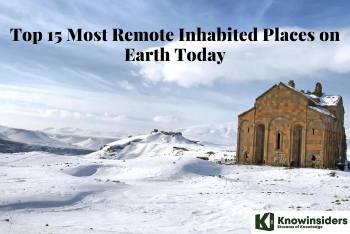 Top 15 Most Remote Inhabited Places on Earth Today Top 15 Most Remote Inhabited Places on Earth Today Whether by nature or by human contamination, these 15 locations on this planet are unsuitable for living or even deadly for humans to inhabit. |
What are the Least – Known Countries in the World - Top 10?
1. Tuvalu
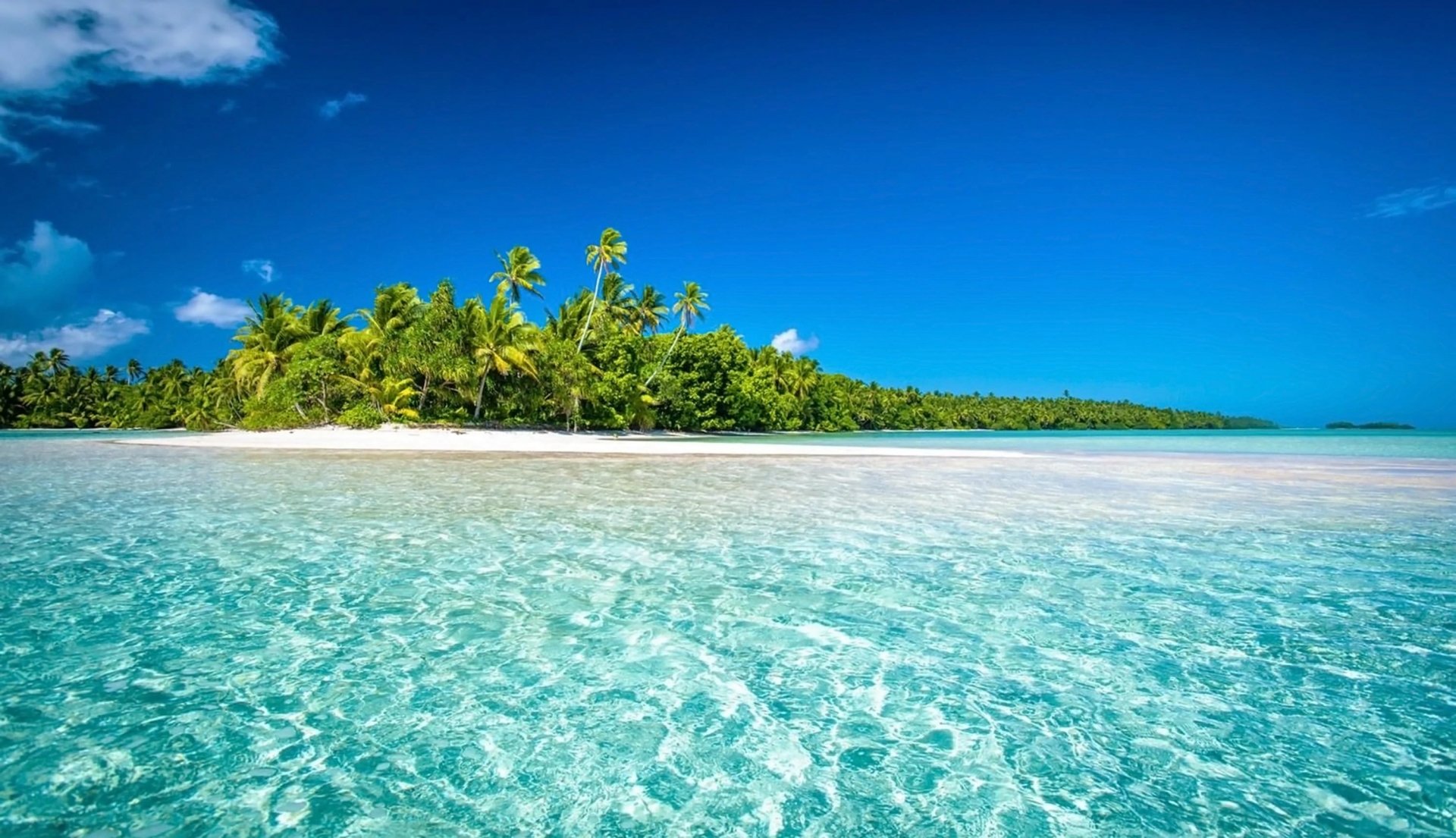 |
| Photo: Timeless Tuvalu |
Located in the western central Pacific Ocean is the island nation of Tuvalu. It is located roughly midway between Hawaii and Australia. To the north and south, respectively, are Kiribati and Fiji, its neighbors. It is composed of nine tiny coral islands arranged in a chain. The islands are situated low. Many are encircled by coral reefs and feature sizable lagoons.
Tuvalu is one of the world's most remote countries, with over 100 tiny islands dispersed throughout the South Pacific.
There is an airport on Funafuti, the main island. Passenger ferries take passengers from there to the outlying communities. Enjoy an uncrowded paradise where you can snorkel candy-hued coral reefs, watch flying fish skim the water, or spend a lazy afternoon in a hammock without having to deal with the throngs of people that frequent popular destinations like Fiji.
Don't wait if you're thinking about visiting Tuvalu; the country's low-lying coastline could be submerged by rising waters, which has long been viewed as an existential threat.
Why go: Stroll powdered sugar beaches at risk from rising sea levels.
International tourist arrivals in 2017: 2,000
2. Kiribati
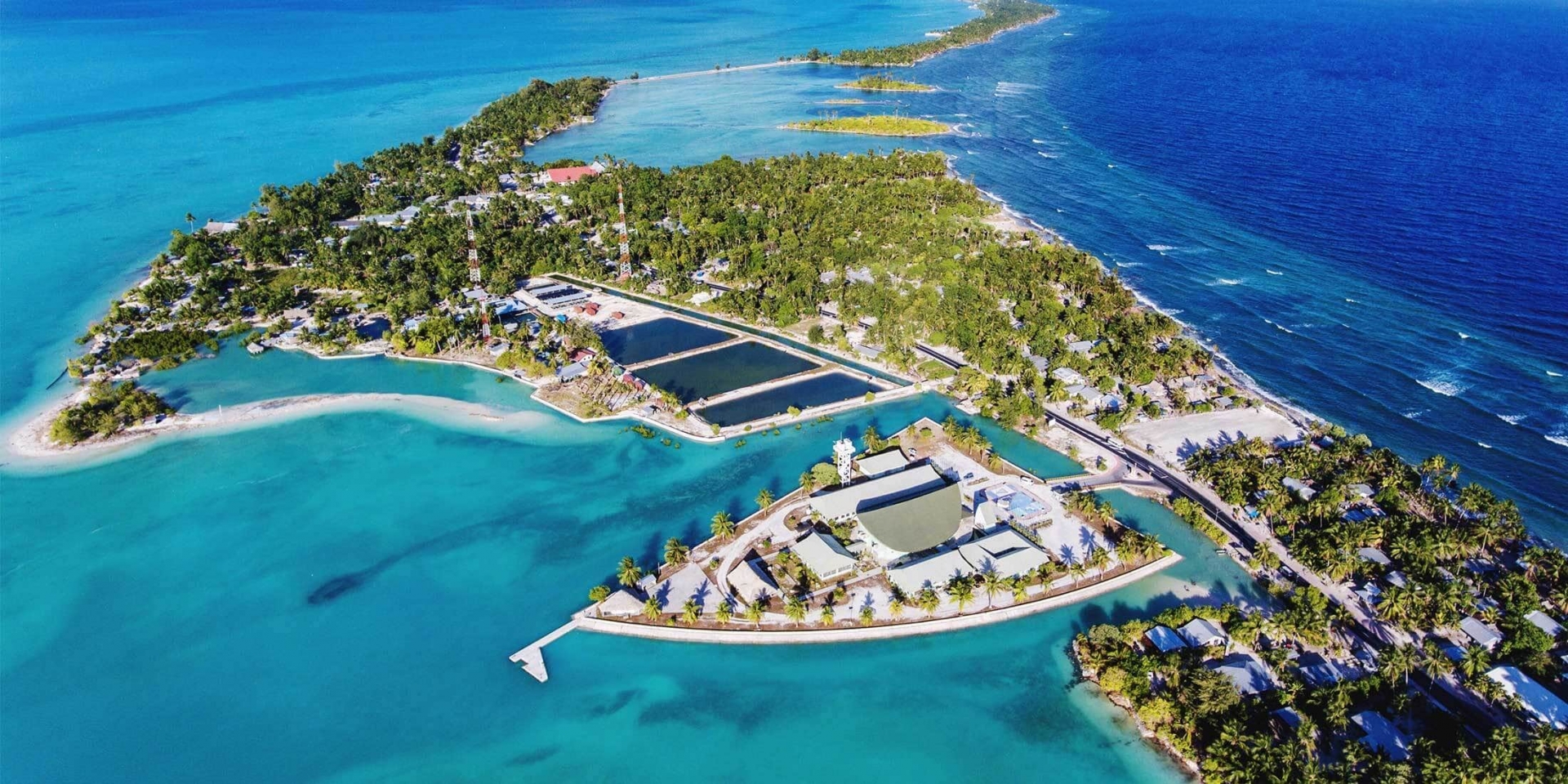 |
| Photo: Globalization Partners |
Comprising 33 islands, Kiribati is an island nation located in the central Pacific Ocean. There are just 20 that are inhabited. The islands are widely dispersed despite the small land area. Most of the islands are atolls, or ring-shaped coral reefs, that are extremely low lying. The largest marine reserve in the South Pacific is located in Kiribati.
Straddling the equator and extending into the eastern and western hemispheres, Kiribati is actually the only nation on Earth to be located in all four hemispheres. On January 1, 2000, it was also the first nation to witness the start of the third millennium.
How to get to Kiribati: Fiji Airways departs from Fiji's capital, Nadi. In addition to a variety of domestic flights, Air Kiribati provides a few international flights through Solomon Airlines.
In Kiribati, scattered atolls and lagoons barely rise above the waters of the central Pacific; these atolls and islands are grouped into three groups: the Gilbert, Phoenix, and Line Islands.
It's difficult to exaggerate how remote these islets are—Fiji, a neighboring country, is only 1,394 miles away—and how few people venture here. But those who do will be welcomed with a rich history of hospitality. Many visitors have been invited to a traditional feast, known as botaki, though not all of them will.
If you're fortunate enough to be there, you may see people dancing in pandanus skirts, hear traditional drumming, and eat breadfruit, taro, and sprouted coconut.
Why go: Experience a botaki in an open-air maneaba, or meeting house.
International tourist arrivals in 2016: 6,000
3. Marshall Islands
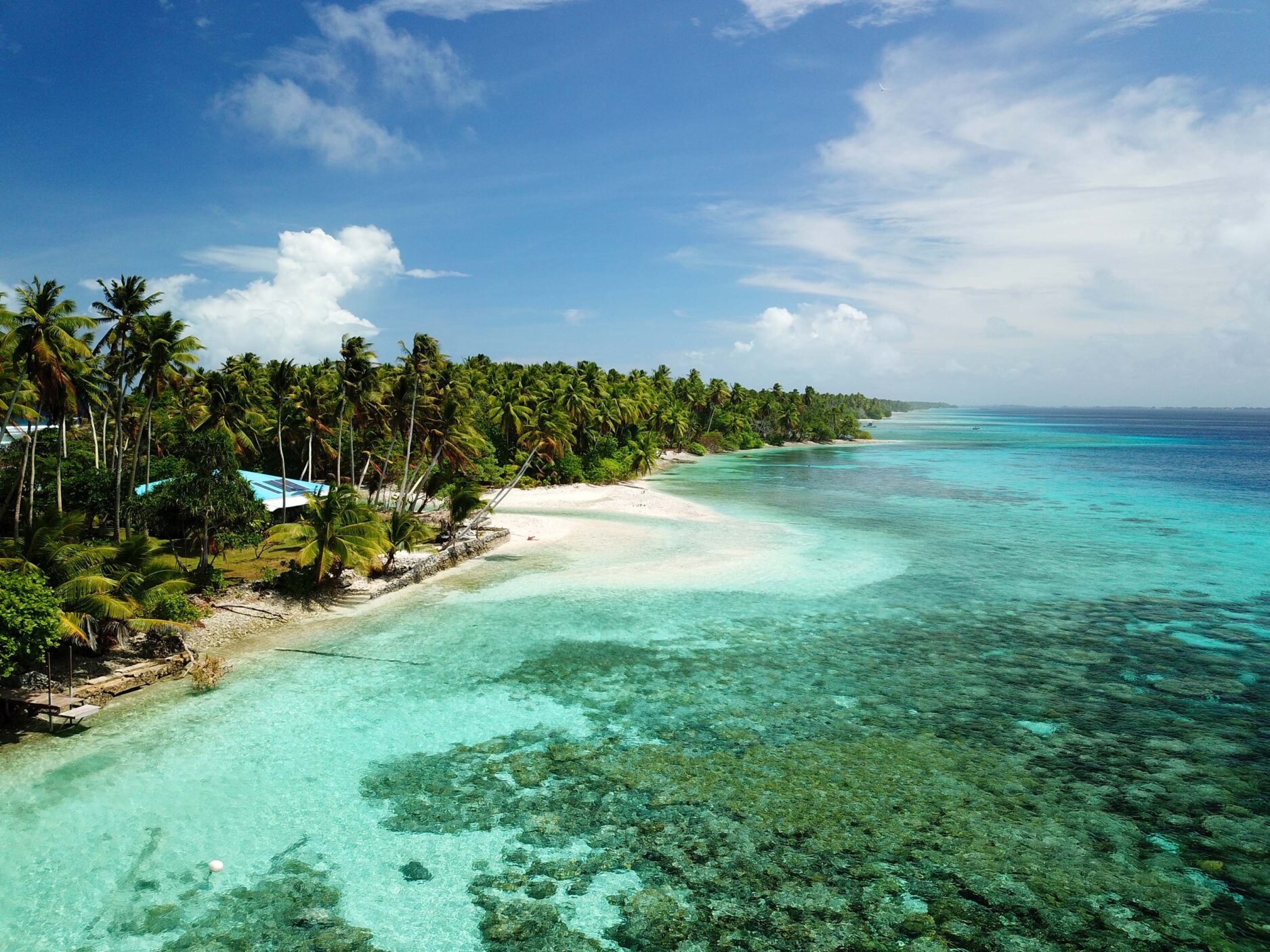 |
| Photo: Getty Images |
Located just north of the equator, the Marshall Islands are made up of 29 coral atolls with more than 1,000 islands and islets. This Pacific paradise is so unexplored that Lonely Planet's Marshall Islands page is currently empty.
The people who live there mainly depend on fishing, but they are not permitted to fish for sharks. The area is roughly halfway between Hawaii and Australia. Establishing the largest shark sanctuary globally, the government set aside approximately 2,000,000 sq km (772,000 sq mi) as a shark sanctuary in 2011.
How to reach Marshall Islands:
Hawaii is the home base of United Airlines. Some domestic flights are offered by Air Marshall, but be sure to check before you fly because there have been previous ground incidents.
These Pacific islands gained international attention thanks to bombs and bathing suits; the term "bikinis" originated from American nuclear tests conducted on the Bikini Atoll of the Marshall Islands.
Even after all these years, the island and the test site at Enewetak Atoll remain radioactive, but the waters around Bikini Atoll have developed into some of the most breathtaking scuba diving locations on the planet.
Near Bikini Atoll, there are over a dozen shipwrecks located on the seafloor. Take a dive to see the USS Saratoga, an aircraft carrier that fought in the Battle of Iwo Jima before being used as a nuclear target by the US military. Divers will discover schools of fish weaving between bombs that are still fastened to the ship's metal decks, and deck guns blooming into vibrant coral reefs.
Why go: Scuba dive into a ship graveyard transformed into an eerie underwater playground.
International tourist arrivals in 2017: 6,000
4. Guinea – Bissau
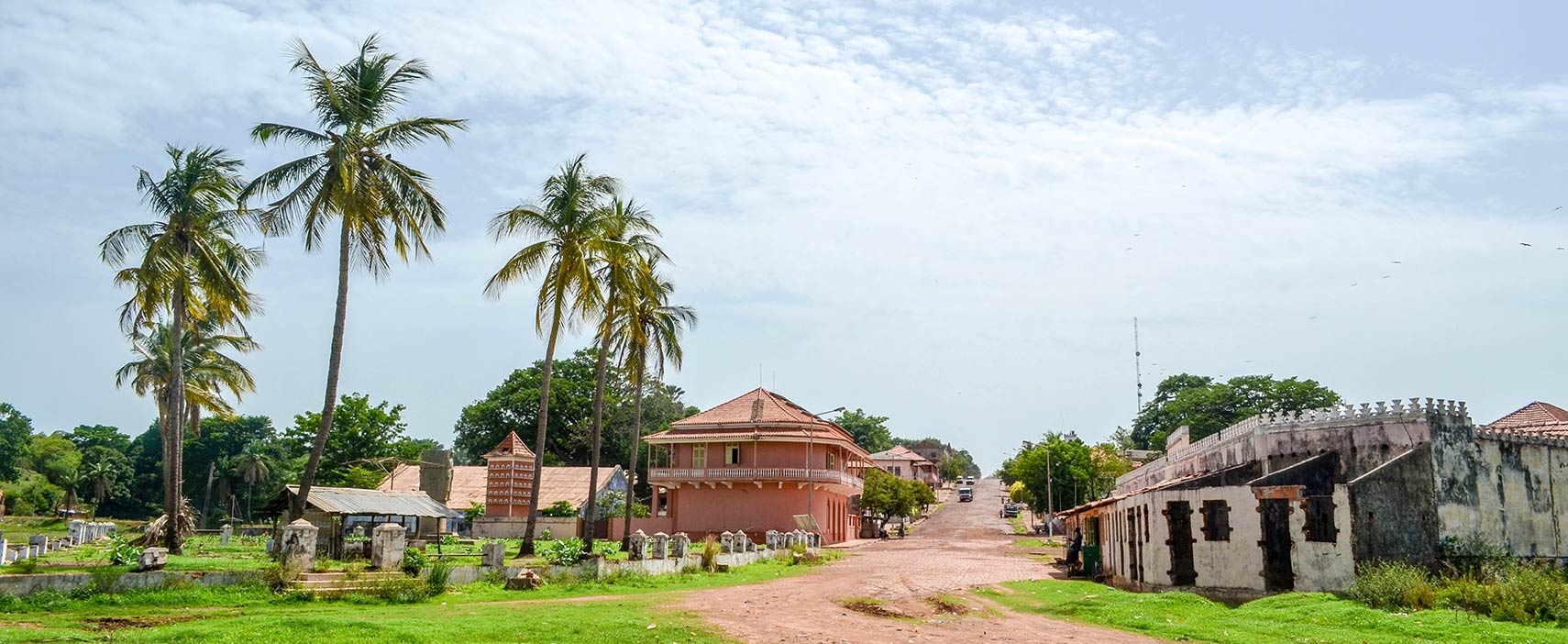 |
| Photo: Nations Online Project |
Senegal to the north, Guinea to the east and south, and the Atlantic Ocean to the west encircle Guinea-Bissau, which is located on Africa's west coast. Following years of guerrilla warfare against Portuguese colonialists, it attained independence in 1974.
According to Lonely Planet, despite political unrest impeding economic growth, Bissau-Guineans persevere because "the jokes, like the music, are loud but tender." The sauce that is served with the bowls of grilled oysters is just hot enough to give them a kick without overpowering their bitter flavor.
Arquipélago dos Bijagós, a maze of 88 tropical islands and islets designated a UNESCO Biosphere Reserve in 1996, is probably where the few tourists who do make the trip will stop. Buffaloes, chimpanzees, hippos, and monkeys reside in the region. Its wetlands and mangroves are home to hundreds of different bird species, and fish flourish in their protected waters.
Guinea is located next door to Sierra Leone and has some of the most breathtaking hiking spots in west Africa in its wildly scenic highlands.
Strong rivers emerge from the forests of Fouta Djallon, where picking a mango or avocado from a nearby tree can serve as a midday snack.
Spend each night in a mountain village and embark on an unforgettable journey through the rugged terrain with a Pular-speaking guide to get a chance to interact with the locals. Rain-flush waterfalls, jagged canyons, and a lasting impression of Guinean hospitality await you as rewards.
Why go: Tone your quads on a culture-bridging hike through the mountains.
International tourist arrivals in 2016: 60,000
5. Montserrat
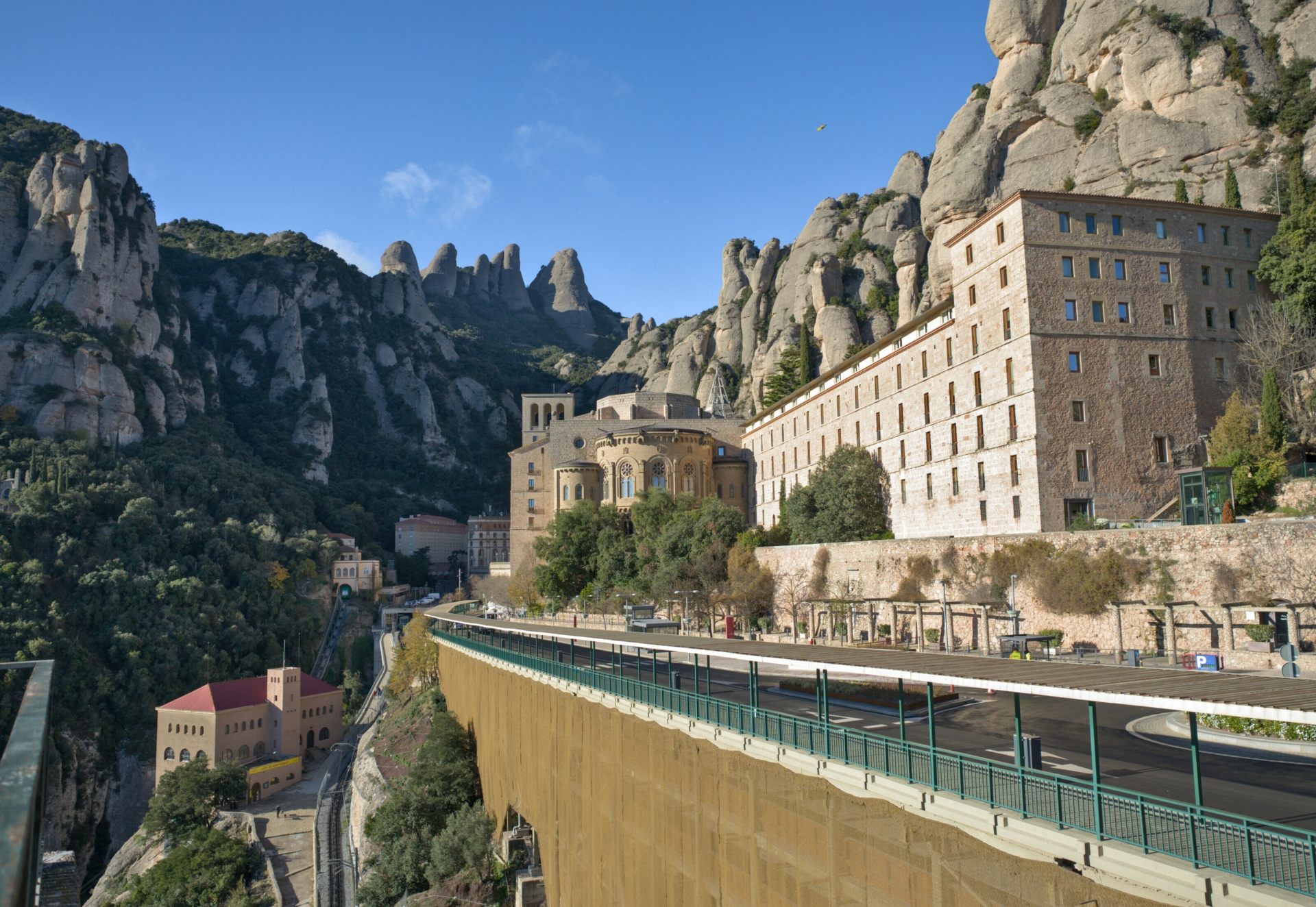 |
| Photo: Novo - monde |
In the Caribbean lies Montserrat, a British Overseas Territory. It is a part of the Lesser Antilles chain of the West Indies, specifically the northern part known as the Leeward Islands. With a coastline spanning approximately 40 km (25 mi), Montserrat is roughly 16 km (10 mi) long and 11 km (7 mi) wide. It is known as "The Emerald Isle of the Caribbean" because many of its residents are of Irish descent and because it resembles coastal Ireland. The only non-fully sovereign member of both the Organization of Eastern Caribbean States and the Caribbean Community is Montserrat.
The Soufrière Hills volcano, which was dormant until July 18, 1995, erupted into activity in the southern portion of the island. Plymouth, the capital of Montserrat, was destroyed by eruptions during the Georgian era. Two-thirds of the island's population were forced to leave between 1995 and 2000, mostly for the United Kingdom, leaving less than 1,200 people in 1997 (the number had increased to nearly 5,000 by 2016). The eastern side of the island, encompassing the site of the former W. H. Bramble Airport, whose remains were submerged by flows from volcanic activity on February 11, 2010, is also heavily affected by the ongoing volcanic activity.
Because of the size of the current volcanic dome and the potential for pyroclastic activity, an exclusion zone was imposed, extending from the southern half of the island to as far north as portions of the Belham Valley. In general, access to the exclusion zone is prohibited, but from the summit of Garibaldi Hill in Isles Bay, one can observe the devastation of Plymouth. The Montserrat Volcano Observatory continues to keep a close eye on the volcano, which has been relatively quiet since early 2010.
It was announced in 2015 that construction of a new town and port at Little Bay on the island's northwest coast would commence. Brades became the new location of the government and business center while further plans were being implemented. Ground was broken on the £28 million Little Bay Port Development Project in June 2022, following several setbacks caused by Hurricanes Irma and Maria in 2017 and the COVID-19 pandemic that started in early 2020. The project is funded by the Caribbean Development Bank and the United Kingdom.
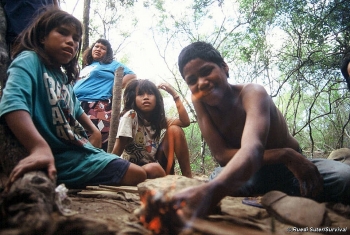 Top 10 Isolated Tribes in the World Today Top 10 Isolated Tribes in the World Today In our very modern world, there are still a small number of remote tribes living a way of life largely unchanged for thousands of years. |
6. Niue
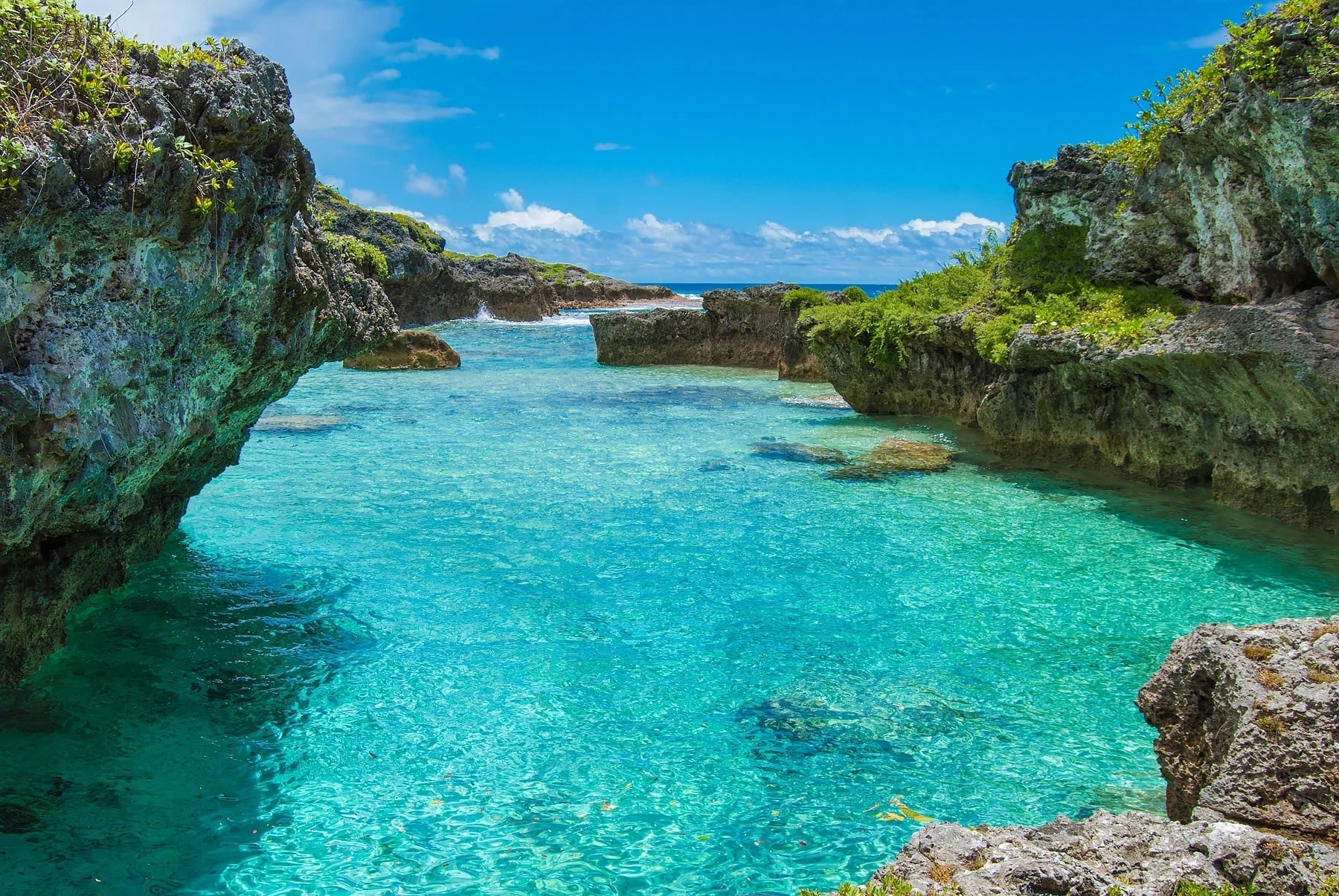 |
| Photo: Culture Trip |
Tiny Niue, unassuming, hospitable, and breathtakingly beautiful, is the perfect getaway from the real world.
The island nation offers fantastic diving, snorkeling, and whale watching due to its rocky coastline, pristine waters, and coral reefs. There's plenty to see for avian enthusiasts as well: among the hibiscus and orchids, one can spot exotic birds and butterflies such as parakeets and white-tailed terns.
Niue receives plenty of tourists despite its isolated location in the South Pacific; regular flights from Auckland bring planeloads of sun-loving Kiwis to the island. It never feels crowded, though, because there aren't many hotels there; at times, it's easy to think you have the island to yourself.
If you visit between July and October, you can witness the yearly migration of humpback whales and even go for a swim with them. In the unlikely event that you visit without seeing these amiable dolphins, spinner dolphin pods are year-round residents.
Head offshore and the land quickly descends into the deep sea because the island is essentially the tip of an underwater mountain. Skipjack tuna, wahoo, and marlin can all be caught without traveling far from the coast.
Snorkelers and divers can explore an underwater paradise of hidden caves and chasms teeming with vibrant sea creatures right beneath the surface of the water. Furthermore, Niue's limestone caverns above the water hold fossils, undiscovered passageways, and prehistoric burial sites, and its seductive paths take you through tropical rainforest and down to quiet sandy coves. There is even space for nine golf holes.
Enroll in the Rally of the Rock, an annual bike ride that winds through a combination of paved roads and bush tracks for those with a particularly daring mindset.
Whatever you do in Niue, you'll almost certainly meet half of the island's population along the way, who will make sure you have an unforgettable time.
7. American Samoa
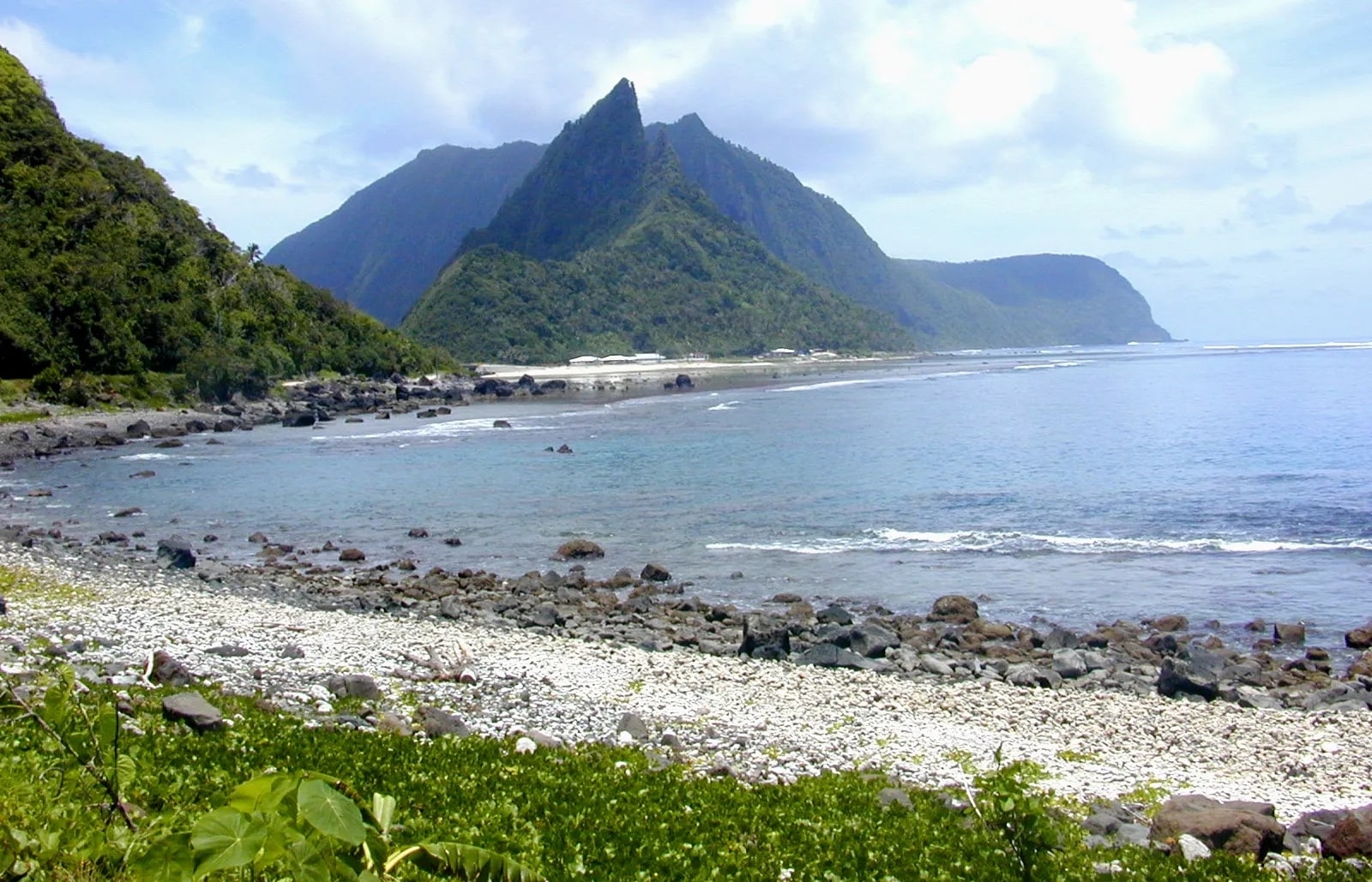 |
| Photo: Britannica |
American Samoa is the only US territory in the Southern Hemisphere. It is a group of islands in the South Pacific, northeast of Fiji, with steeply pitched islands falling towards clear water.
There are countless ways to explore the sea here, whether you're skimming Pago Pago Harbor in an outrigger canoe or throwing a line for big marlin and tuna. Go on a trek through fruit bat country in the National Park of American Samoa to uncover the treasures hidden beneath the thick forest canopy.
With a three-foot wingspan, the fuzzy mammals known as Samoan fruit bats can be seen swinging from trees or diving through the air to find fresh fruit and nectar.
Why go: Hang with the endangered fruit bats of the National Park of American Samoa.
International tourist arrivals in 2017: 20,000
8. Comoros
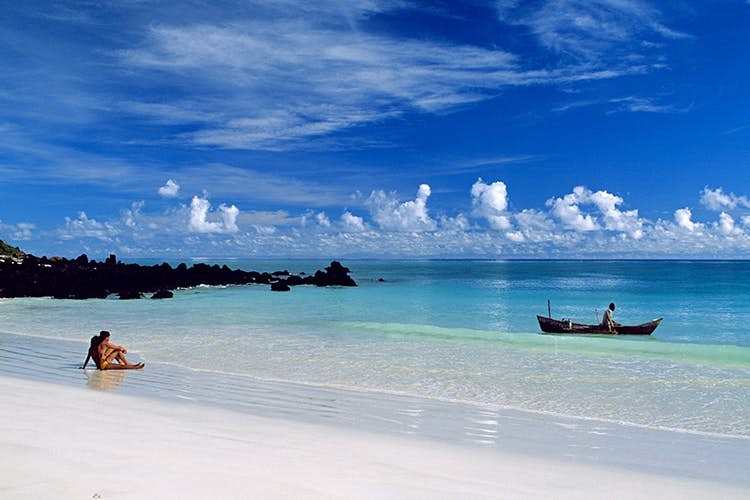 |
| Photo: Lonely Planet |
Comoros is not your typical tropical island getaway. Yes, it has sandy beaches, clear waters, and vibrant coral reefs, but its greatest asset is its unique culture, which blends the most vibrant aspects of Arabian and African culture.
The Comoran archipelago, which floats between Madagascar and Mozambique, has long been a crossroads of civilizations, with the majority of its people being mixed Afro-Arabs. The islands are infused with a blend of traditional Islamic and Swahili elements, lending them a serene and somber ambience that ensures a warm greeting.
With the exception of Mayotte, the four main islands that make up tranquil Comoros share the warm waters, empty beaches, and breathtaking hiking that these well-known travel destinations are known for, but they do not share the Seychelles' or Mauritius' tourist infrastructure.
The capital, Moroni, which sits atop the island of Grande Comore and exudes the vibe and customs of a long-forgotten outpost, is where most visitors enter the nation. In the Arab Quarter, men sip tea under whitewashed buildings as they have for decades, and women wear vibrantly colored fabrics from East Africa, smiling shyly from elaborate doorways.
The smell of cloves, vanilla, and other spices permeates Comoros, also referred to as the Perfume Islands, and the people there take great pride in producing more ylang-ylang essence for the perfume industry than any other place.
Trek to the summit of Mount Karthala, also on Grande Comore, and leave fragrant Moroni behind. At just under 2,400 meters (7,800 feet), the highest peak in the archipelago is also one of the most active volcanoes in the area. The vistas are breathtaking.
Visit Mayotte for a taste of France. Because of a peculiarity in its colonial past, Mayotte is currently administered from Paris. Its distinct Gallic air gives these already distinctive islands even more depth. It is also arguably the most developed of the islands.
9. Solomon Islands
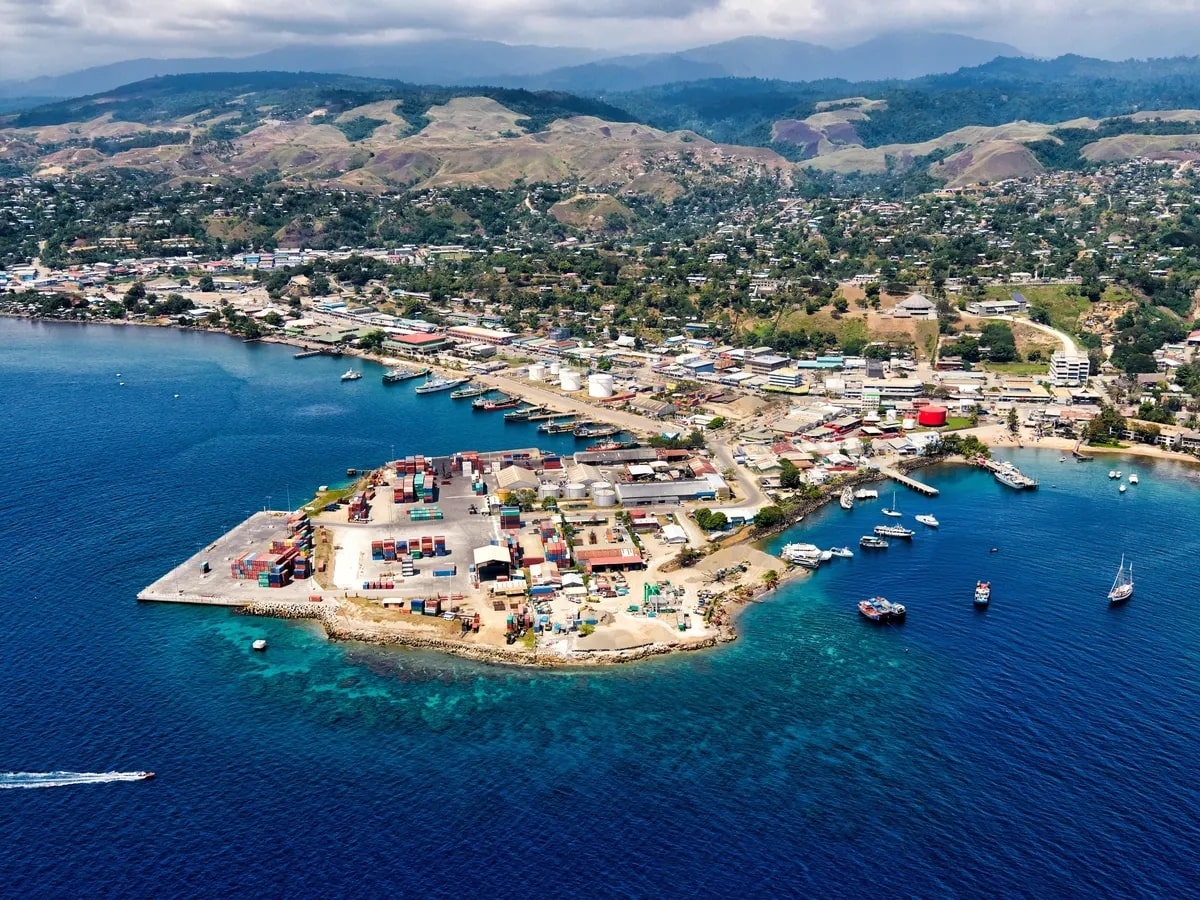 |
| Photo: The Guardian |
Located in Oceania, northwest of Vanuatu and east of Papua New Guinea, are the sovereign islands known as the Solomon Islands (Pijin: Solomon Aelan), which are made up of six large islands and more than 900 smaller ones. With 652,858 people, it has a land area of 28,400 square kilometers (11,000 sq mi). Guadalcanal, the largest island, is home to Honiara, the capital. The North Solomon Islands, a part of Papua New Guinea, and other Melanesian islands make up the archipelago from which the nation derives its name. Outlying islands like the Santa Cruz Islands, Rennell, and Bellona are not included in this group.
The islands have been inhabited since at least 28,800 BCE. Later migration waves, including the Lapita people, mixed with the islanders to create the current population of indigenous Solomon Islanders. The first European to visit them was the Spanish navigator Álvaro de Mendaña, who named them the Islas Salomón in 1568. Decades later, in 1595, Mendaña made a second trip back to the Solomons, and in 1606 another Spanish expedition headed by Portuguese navigator Pedro Fernandes de Queirós made landfall. When Captain Gibson, R.N., of HMS Curacoa, proclaimed the southern Solomon Islands a British protectorate in June 1893, Britain officially defined its area of interest within the Solomon Islands archipelago. The United States, British Commonwealth forces, and the Empire of Japan engaged in heavy combat during the 1942–1945 Solomon Islands campaign, which included the Battle of Guadalcanal.
The British administration of the time changed its official name from the "British Solomon Islands Protectorate" to "The Solomon Islands" in 1975. The following year, the islands gained their independence. After gaining independence, the name was dropped in 1978 and became simply "Solomon Islands" (without the definite article). Solomon Islands gained independence and established a constitutional monarchy. Elizabeth II, the Queen of the Solomon Islands, is represented by the Governor-General.
10. Djibouti
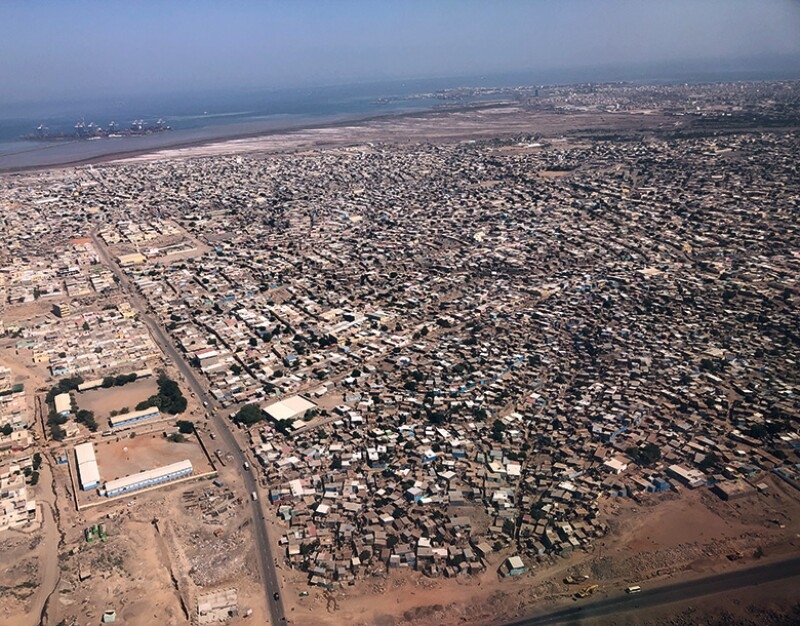 |
| Photo: Euromoney |
Djibouti is strategically located, perched at the meeting point of the Red Sea and the Gulf of Aden, but the surrounding terrain can appear surreal.
In Lake Abbé, camels graze amid lunar towers, steam rises from the Ardoukoba Volcano, and white-salt beaches encircle the hypersaline Lake Assal.
There, tourists can see flamingos with bubble gum-colored plumes that add a rococo touch to the otherwise bleak scenery. The Afar people are nomads who have adapted to this harsh environment by encouraging their flocks to graze on widely spaced pockets of marsh grass, which is a testament to human ingenuity.
Why go: Have an off-planet experience without the costly space flight.
International tourist arrivals in 2010: 51,000
Conclusion
You have just discovered the Top 10 least visited countries on our planet. Obviously, these countries are extremely beautiful with many mysteries that stimulate our curiosity.
However, very few people in the world have the conditions to visit these countries even once in their lives. Because most island countries are very far away, to visit these places you need to have abundant financial resources, good health, a lot of time and many other strict conditions.
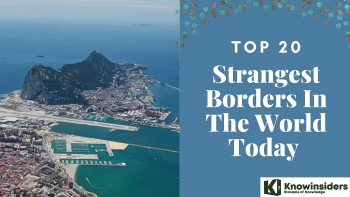 Top 20 Strangest Borders In The World Today Top 20 Strangest Borders In The World Today Border plays an important role in each country, and these borders are more special than the rest. Take a look at the article below to ... |
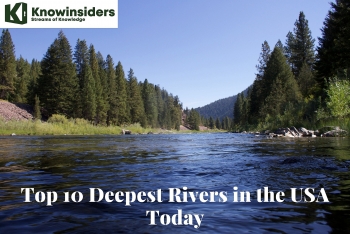 Top 10 Deepest Rivers in the USA Today Top 10 Deepest Rivers in the USA Today In this post, the top 10 of the US' deepest rivers were made according to their maximum depth measured in meters. |
 Top 10 Greatest Baseball Players In the USA of All Time Top 10 Greatest Baseball Players In the USA of All Time Who are the best baseball players of all time? As for the debate about who are the best MLB players ever, there is a lot ... |
 Top 10 Least Popular and Most Popular Car Colors in the US Top 10 Least Popular and Most Popular Car Colors in the US Do you think white? You are right because this is still the most popular car color among customers in the US and other sides of ... |






